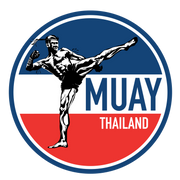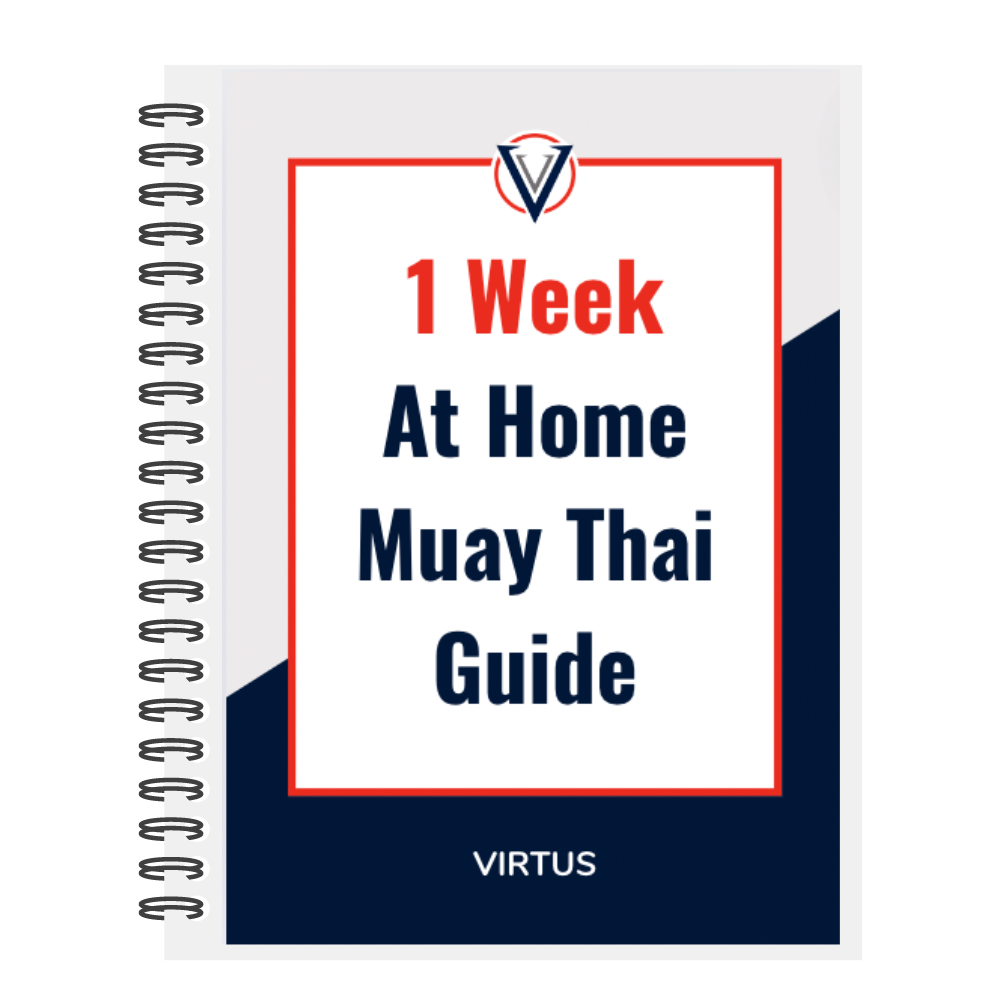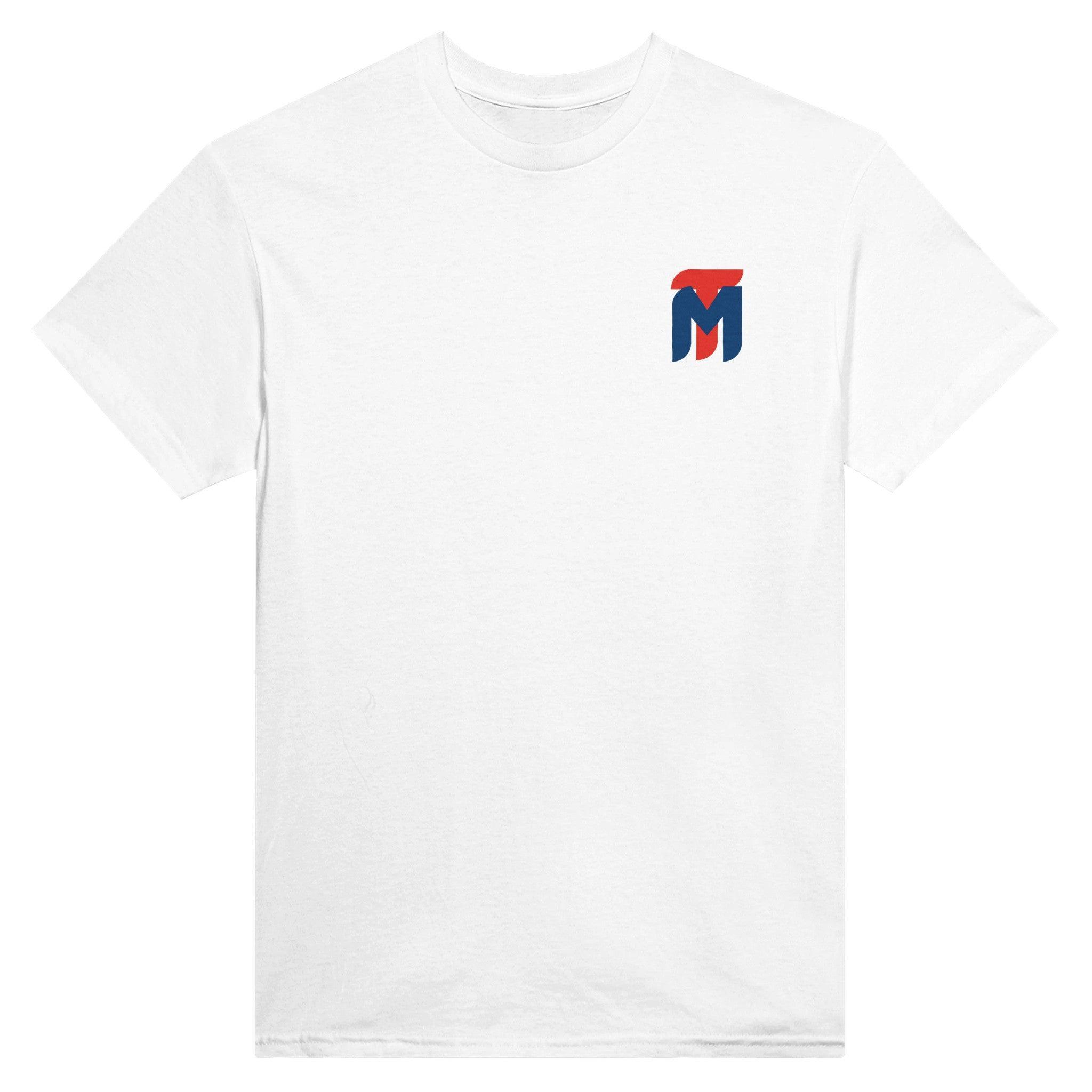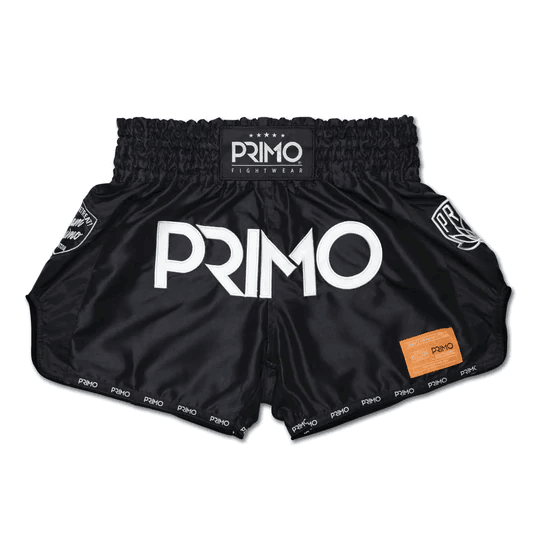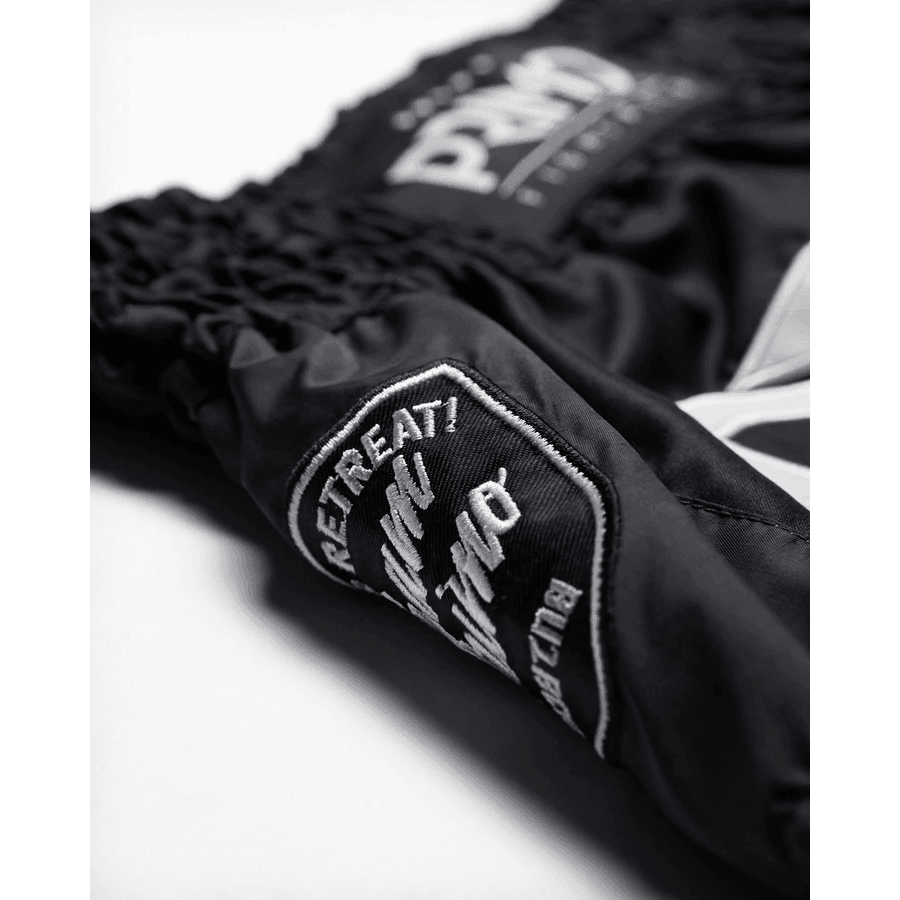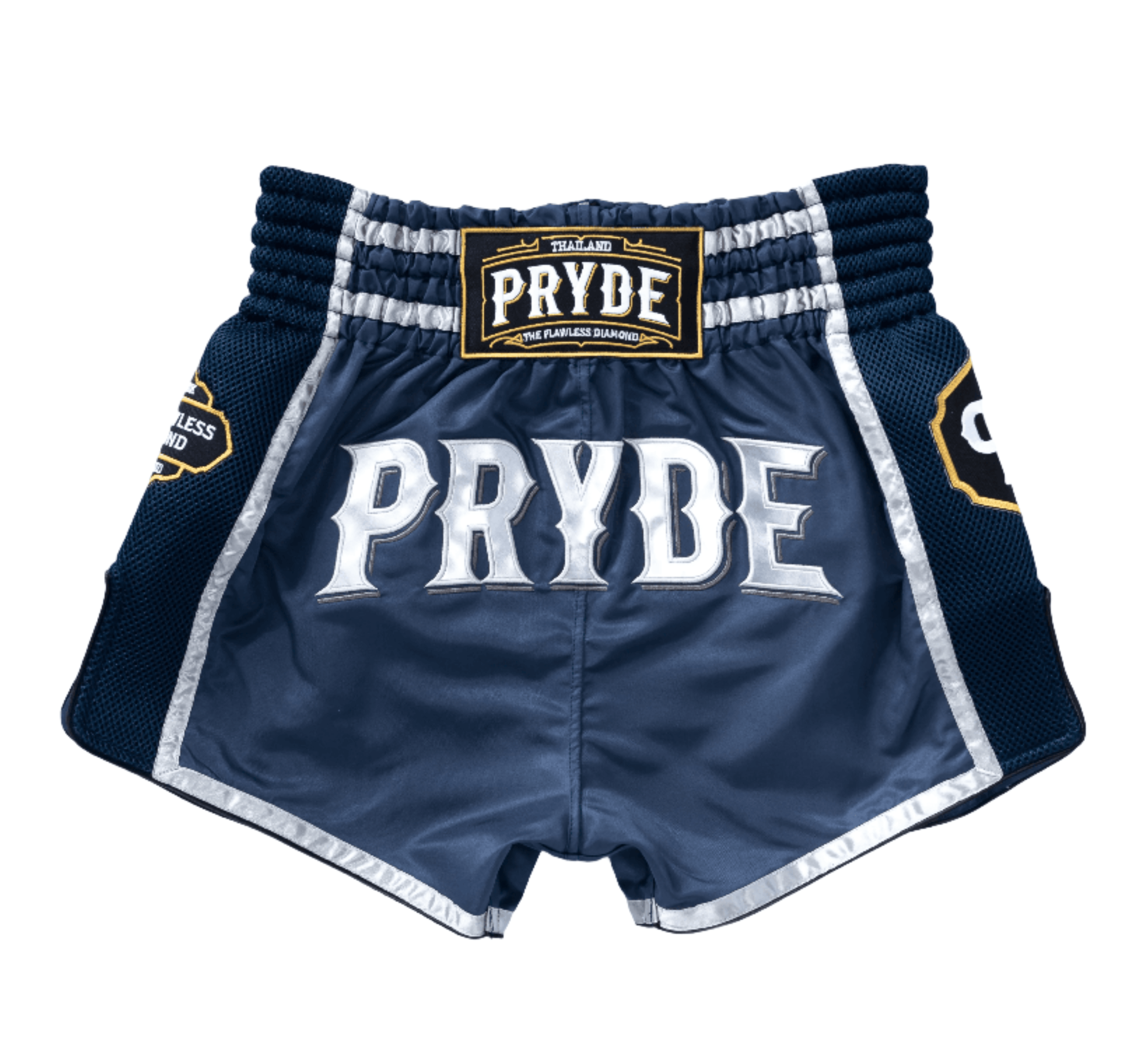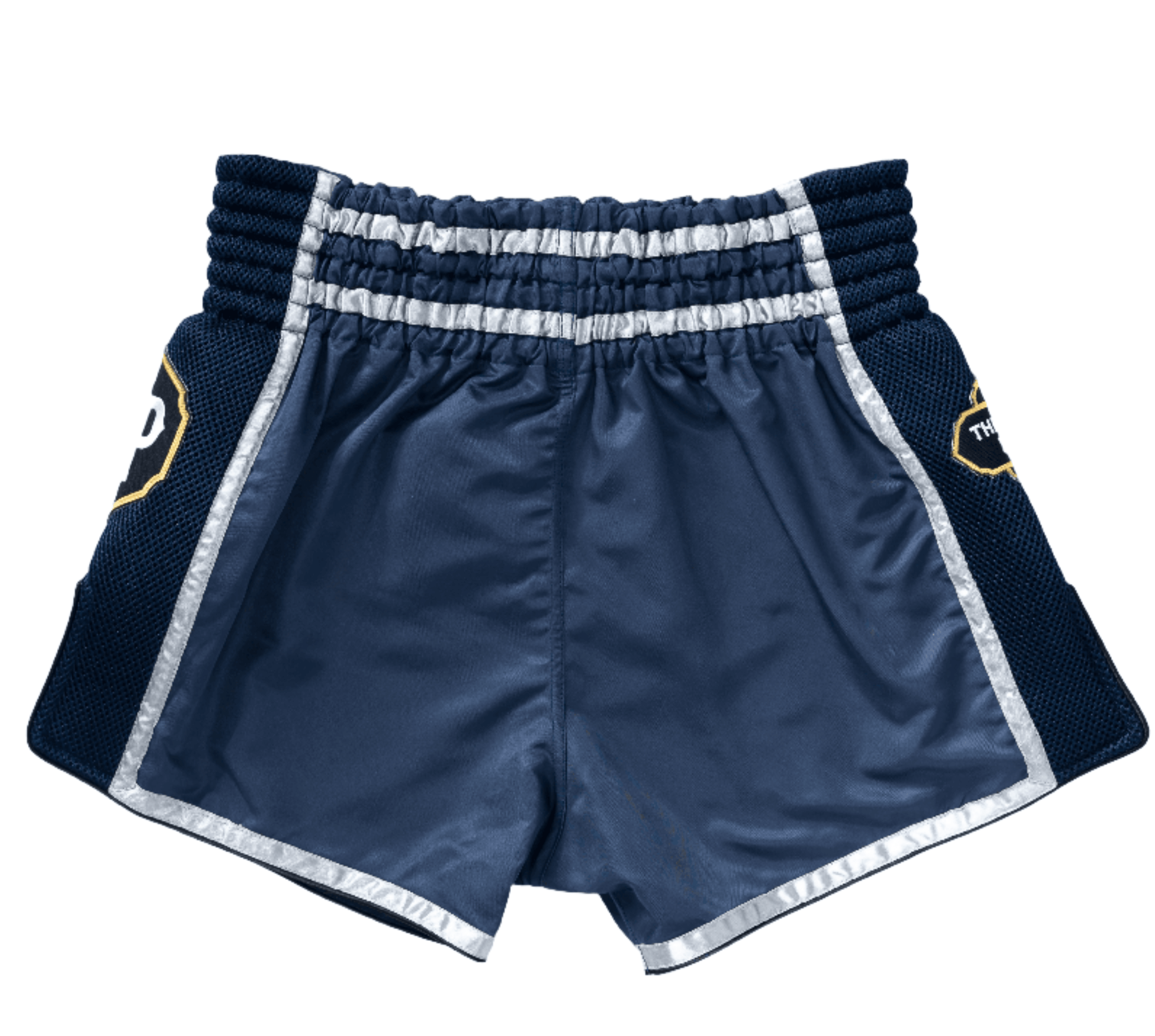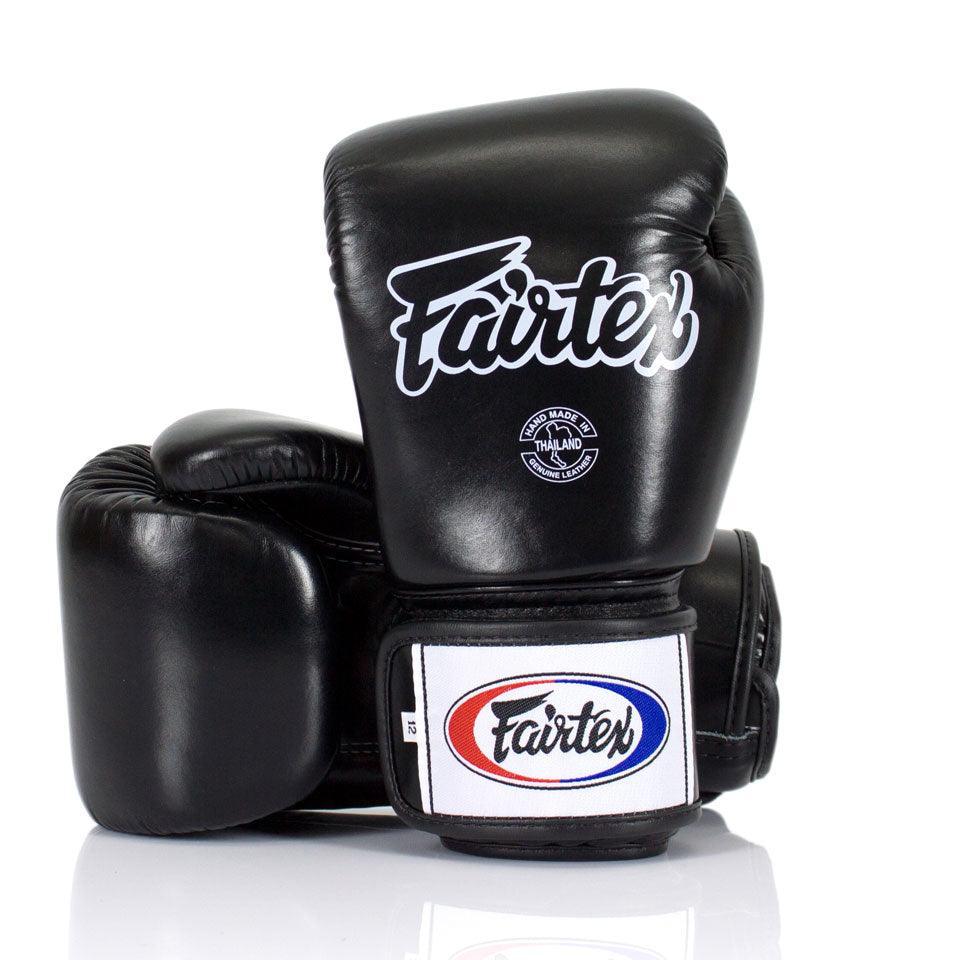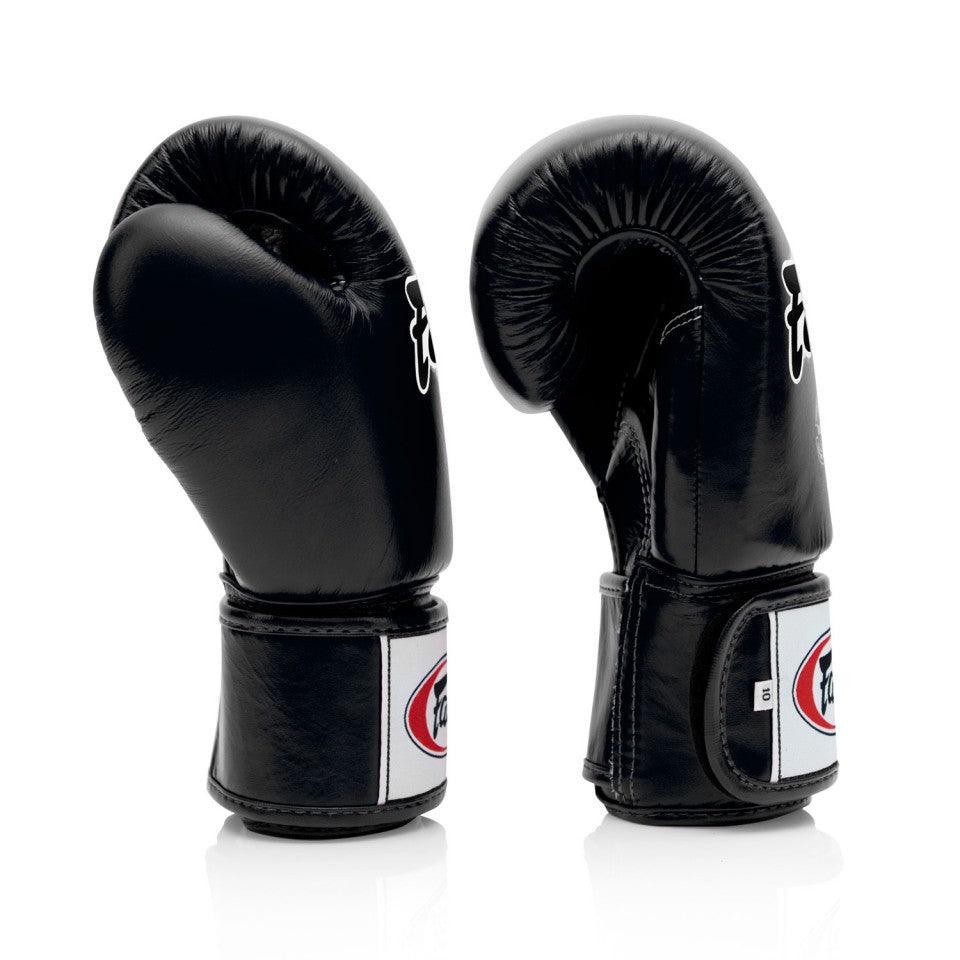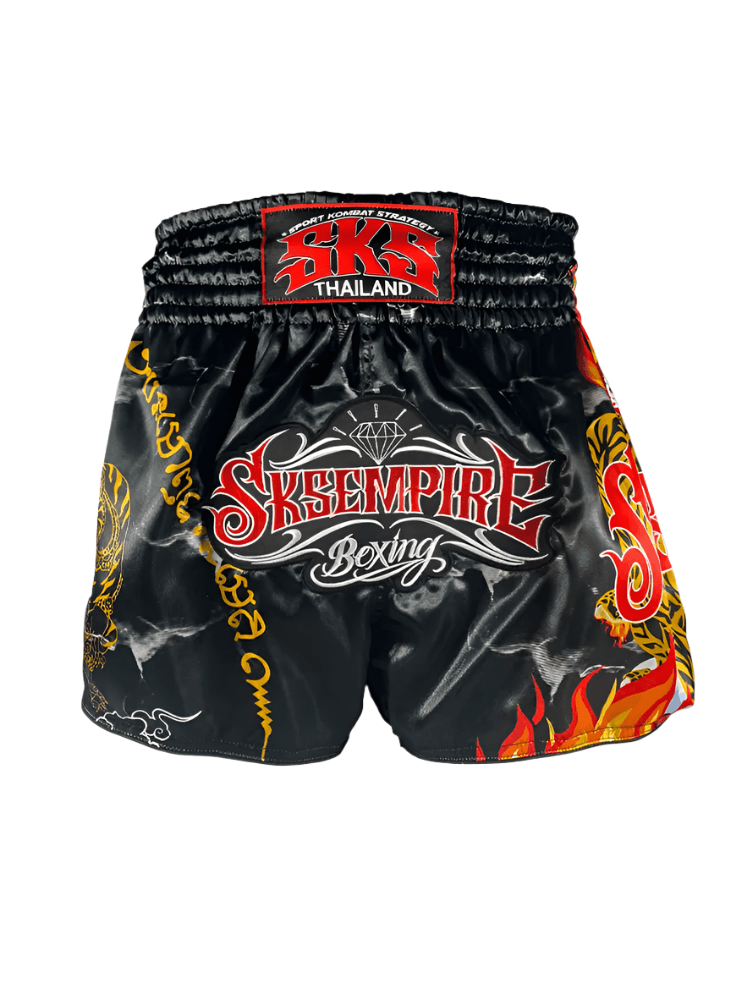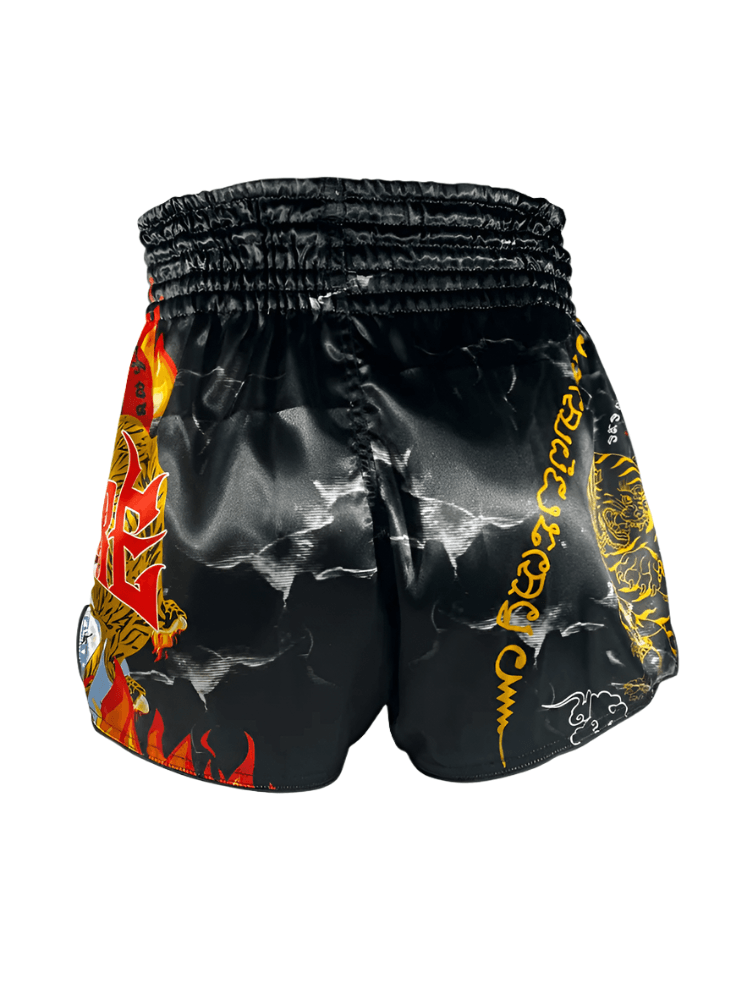Preventative care
Hand Wraps
Hand wraps come in various shapes, sizes, designs and colours. Their purpose is to secure your wrists and digits in place and provide a protective layer on top of them, thereby limiting movement inside the gloves and dispersing the pressure from impact. The ideal length for adults is 4.5m (~2.5 for children) as it provides sufficient coverage across all areas of the hand, irrespective of hand size.
There are many ways to wrap hands (with the example below being just one) and individuals find their preferred method with time/experience. What's important is the emphasis you place on securing your wrists and digits, while covering your knuckles sufficiently. Ensure you wrap your hands for all training sessions (although they can be removed when clinching) so that mitigate the risk of injury.

Use gloves with solid wrist protection
With hand wraps providing security and stability underneath, your Muay Thai gloves are designed to provide additional wrist/finger/knuckle protection while absorbing the impact of the various surfaces you strike. The quality of your gloves has a direct relation on the security and protection they can provide. This is an important point to consider when investing in gloves, as their design, size and price need to be weighed up against their durability and protection capabilities.
Gloves with low-quality padding and foam are more likely to deteriorate quickly, thereby reducing their ability to protect your knuckles. In addition, low quality hook-and-loop or laces reduces their potential to secure your wrists. Therefore, look for gloves that have a decent sized wrist coverage with a securing function that fits tightly. Primo Fightwear gloves have a one of the longest cuffs available amongst Muay Thai brands. The padding should provide some stubborn resistance when you push down on it and it should be throughout the gloves (except on the underside, although some gloves have a padded section on the underside along the outer part of the hand to help block kicks with your hands).
Be careful how you hit pads and bags
Proper technique helps significantly reduce the likelihood of injury and enables you to strike surfaces at top power with confidence. Conversely, striking Thai pads at top power without proper technique is an easy way to get injured, especially if it's your first time hitting the pads. If you don't ensure the proper angle of your wrists and the proper connection on you knuckles, it's easy to cause damage. Therefore, it is important to learn proper technique when practicing martial arts, as it not only makes you better overall but also reduces the likelihood of injury. This point is applicable to all types of strikes but especially so for boxing given the point above about how fragile and bone dense your hands are.
Strengthen your hands and wrists with equipment
Making a concerted effort to strengthen your hands and wrists helps mitigate the risk of injury and helps them recover quicker if they do get injured. Fortunately, you can do so with minimal equipment and by dedicating only a few minutes per day on a consistent basis to reap positive results. Using a stress ball is a perfect way to start as you can use your own strength to test your pain limits. Stress balls provide light resistance, promote hand and wrist circulation, and build back grip strength.
Hand grips are the most common equipment for hand and wrist exercising. With a hand grip you can adjust the resistance and choose to squeeze multiple reps at low resistance, few reps at high resistance or a mixture of both. You can clearly see the muscles in your forearms and wrists at work when using a hand grip.
Powerballs are a newer invention that is also incredibly useful for strengthening hands and wrists. It uses gyroscopic resistance to strengthen your forearm, wrists and grip. Again, consistency is key here but you don't need to use it for hours on end per day. Like a hand grip, Powerballs are quite discreet and can easily be used when at work or while on the move.

Stretching
Stretching before any high-intensity training is essential to maximise performance and mitigate the risk of injuries. Often though, people neglect the need to stretch their hands and wrists, even though they come under substantial stress in training.
You can stretch your fingers and wrists in a variety of ways, many of which are incredibly simple. For example, you can make a tight fist and hold for 30 seconds, then uncurl your fingers and spread them wide. A useful wrist stretch involves you having your arm outstretched in front of you, with your forearm facing the ceiling. Bend your fingers forward (fingers pointing to the floor) and then backward (fingers pointing to the ceiling) until you feel a slight stretch each time. You can do this the other way around with the underside of your forearm facing the ceiling too. You can extend the stretch by using your other hand to pull the fingers back. For more useful hand and wrist stretches, check out this WebMD slideshow.
Post-injury care
Hand and wrist injuries are very common in Muay Thai, however, given their fragile nature, they can become some of the most long-lasting and nagging injuries compared to others common to the sport.
Therefore, it's important that you care for any injuries thoroughly and get them assessed by a professionals if they cause consistent pain, especially if it's sharp and/or severe.
Rest
This is the most obvious but also the most useful. If you don't give your hands and wrists a break while an injury is ongoing (and also for a period once the injury has healed), the injury (or another) can quickly resurface.
Therefore, avoid training where possible and avoid carrying heavy items or working with your hands (certainly not possible for everyone). Obviously, this isn't always possible so be diligent and listen to your body when things get strenuous. If you feel compelled to train with an injury, avoid heavy bag and pad work, avoid clinching and use large gloves wherever possible. Remember, the longer you work with injured hands and wrists, the longer it will take to recover and the more likely the injury will resurface in the future. It is important to rest and allow your ligaments to heal properly in order to prevent further injury and promote a speedy recovery.
You will notice that stretching is both a preventative and post-injury method of care - that's because it's so effective! After all, the tendons in your wrists and hands, along with the surrounding muscles, work best when warm and loose.
Stretching as part of a recovery regime helps keep the flexibility and blood flow at optimum levels which, in turn, can ease pain and discomfort. It could also accelerate the recovery process in some cases. The exercises listed above are also useful as part of recovery, as are the ones shown in the image below. Additionally, following the R I C E formula (rest, ice, compression, elevation) is recommended for any sprains or injuries to the hands and wrists in Muay Thai, as rest is crucial for reducing inflammation and promoting healing.

Hand therapy
If a hand or wrist injury is serious but doesn't involve any broken bones, it's likely that a medical professional with refer you to a hand therapist for assessment and treatment. As part of their assessment, they can undertake diagnosis using x-rays and injections (and are good at recognising combat sport related injuries due to the number of boxers they frequently see). Hand therapists then provide non-surgical care for hand disorders and injuries using physical methods such as exercise, wound care and splinting.
For many, hand therapy is a type of rehabilitation through occupational therapy, physiotherapy and psychological support. It can be incredibly useful for injuries that don't need surgery and also for post-surgery care. Like any recovery, it takes a while to fully recover from your injuries even with attentive hand therapy. However, the expertise provided is likely to make your recovery faster and more effective.
Can repeated hand injuries in Muay Thai lead to long-term consequences?
Repeated hand injuries in Muay Thai can lead to long-term consequences such as chronic pain, reduced hand mobility, arthritis, and decreased hand strength. Proper hand wrapping techniques, regular rest periods, and seeking medical attention for injuries are crucial to prevent long-lasting damage.
